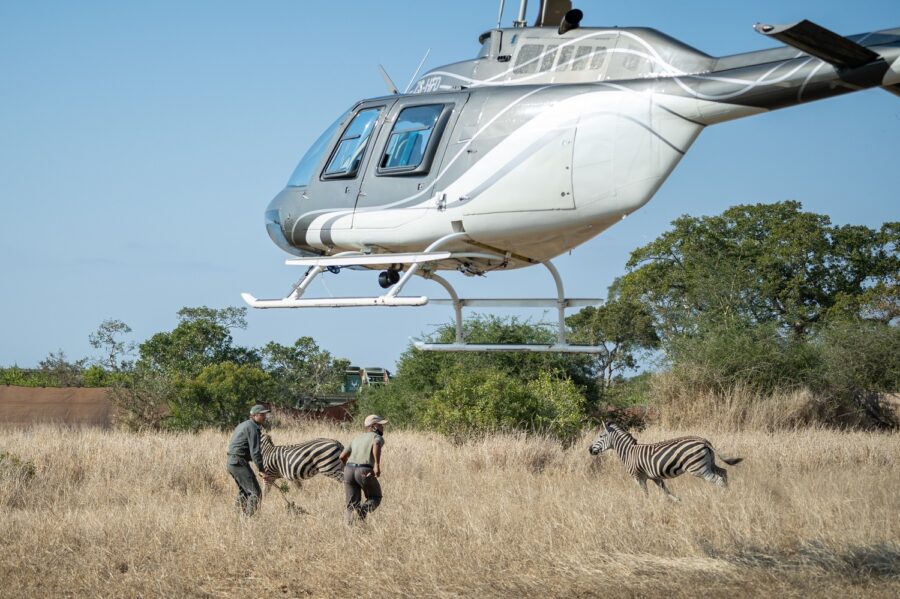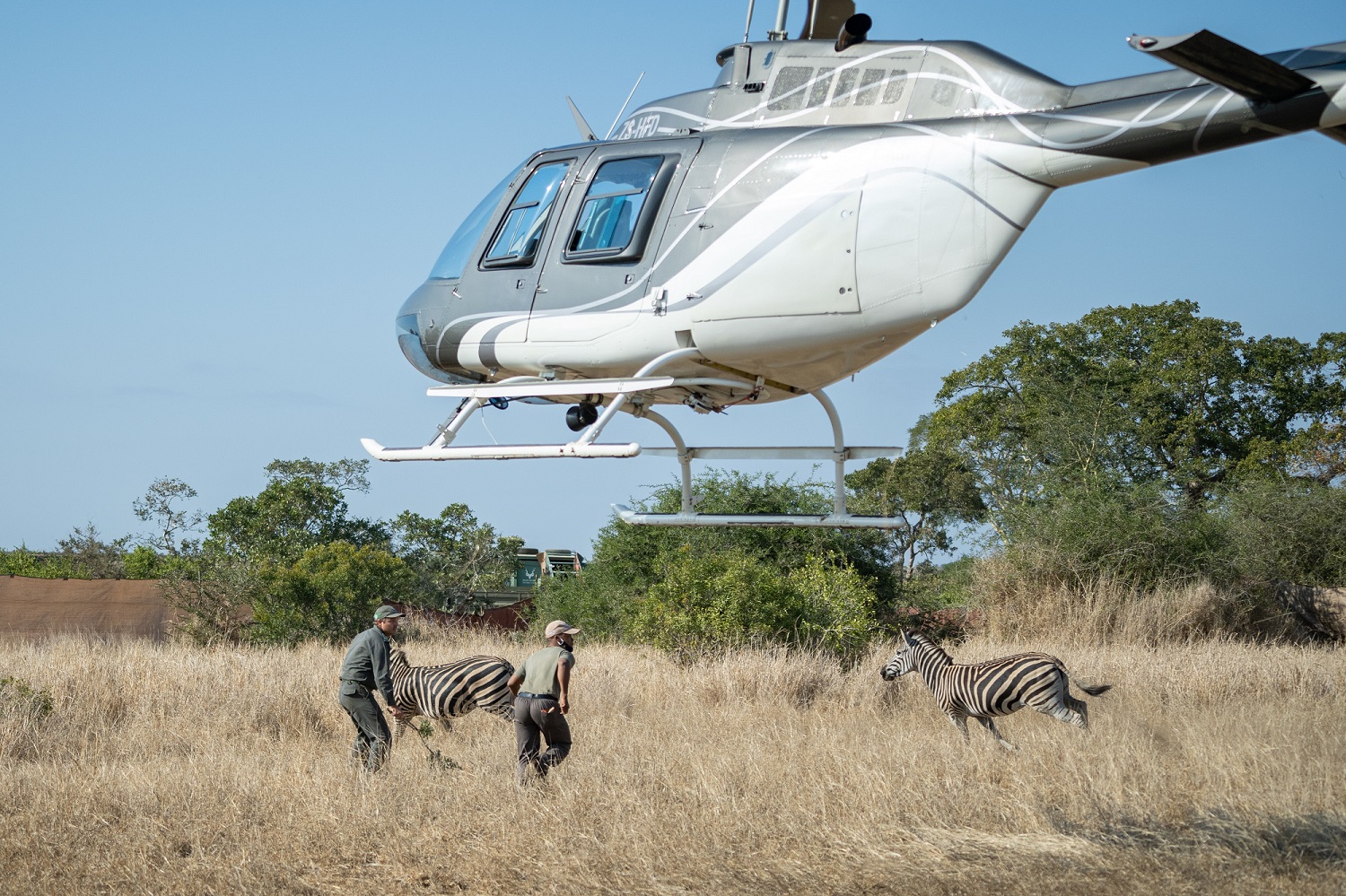
Almost 100 Animals Safely Translocated from Kruger to Mozambique in Collaborative Conservation Victory
In another victory for cross-border conservation, a series of successful wildlife translocations saw 27 Zebra and 62 blue wildebeest safely making the 1 250 km journey from Kruger National Park in South Africa to Zinave National Park in Mozambique. These new arrivals are welcome additions to the more than 2 300 reintroduced animals that are […]

In another victory for cross-border conservation, a series of successful wildlife translocations saw 27 Zebra and 62 blue wildebeest safely making the 1 250 km journey from Kruger National Park in South Africa to Zinave National Park in Mozambique. These new arrivals are welcome additions to the more than 2 300 reintroduced animals that are now thriving under the restoration and management programmes being implemented in Zinave.

Since 2018, more than 700 animals have been translocated under a donation from South Africa’s Department of Forestry, Fisheries and the Environment to the Ministry of Land and the Environment in Mozambique, as they work together, supported by Peace Parks Foundation, to restock and rebuild key parks within the Great Limpopo Transfrontier Conservation Area. SA’s Environment Minister Barbara Creecy says:
“The translocation of species from the Kruger National Park to the Zinave National Park in Mozambique is an important indication of how South Africa’s conservation success is contributing to the rewilding of Africa. The success of ongoing cross-border collaborations is an outstanding example of how African countries are working together to solve conservation problems and grow the eco-tourism sector.”
The 2-million-hectare world-renowned Kruger National Park, managed by South African National Parks, offers a wildlife experience that ranks with the best in Africa. With more than 147 mammal species thriving in abundant numbers as a result of many years of expert conservation management and protection strategies, the park is well positioned to support the restoration of decimated protected areas in neighbouring southern African countries.
WATCH VIDEO: Rewilding Africa – From Kruger to Zinave
The restoration of Zinave National Park has been one of southern Africa’s most remarkable conservation success stories. After decades of human impacts severely disrupted the 408 000ha Park’s natural ecosystems and healthy wildlife populations, work began on restoring Zinave to its former glory in 2016, with the signing of a co-management agreement between Mozambique’s National Administration of Conservation Areas and Peace Parks.
Through this partnership, significant investment has been directed towards enhancing conservation management, anti-poaching, infrastructure development, tourism development and community development interventions in the Park.

Today, thanks to wildlife donations from South Africa and Zimbabwe and through restocking from other areas in Mozambique, Zinave now boasts 13 species including impala, reedbuck, waterbuck, buffalo, zebra, wildebeest, giraffe, sable and elephant.
Thriving in their safe and plentiful habitat, these reintroduced populations have more than doubled in numbers to close to 6 000 animals. With the herbivore populations thriving, the first predators – a clan of four spotted hyenas – were reintroduced into the park at the end of 2020 and have already produced their own offspring.

Minister of Land and the Environment in Mozambique, Ivete Maibaze, says:
“It is heartening to see how healthy populations of wildlife have stimulated the potential for increased tourism and related income opportunities in and around Zinave. The Park is set to become a major contributor to Mozambique’s eco-tourism economies. We highly value the cross-border partnerships that we have with our governmental partners in South Africa and with Peace Parks Foundation. It is a wonderful example of how regional partnerships can contribute to building a more prosperous future for southern Africa and its people.”
Kruger and Zinave national parks respectively form the most western and eastern anchor parks of a vital cross-border wildlife corridor within the Great Limpopo Transfrontier Conservation Area.

Wildlife monitoring has identified various species, such as elephants, lions and wild dogs, which are using this transfrontier migration route to access water, food and breeding grounds. Ensuring healthy and protected ecosystems in these areas is therefore not only significant to the parks, but to the environmental well-being of the region, its natural resources and human development.
